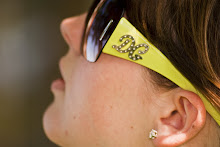Technology Incorporated:
During this unit, we will be using a class set of iPads with an app called “Brushes” installed. This app is free. Students will also be using a wireless printer to print their pictures made in the app.
Learning Theories/Design Models/Correlation to Activities:
Constructivism/Constructionism. Papert's learning theory of Constructionism is one I lean heavy on in this unit. It describes a style of teaching where students are basically thrown headlong into a concept and are meant to figure out much of the information on their own. Students will be exploring ways to make art using an app. Students will be given the prompt, “Draw an animal from a list in their natural habitat using atmospheric perspective and exploring the use of Brushes to create a complex image.” Students will then be given a demonstration of the basic tools an features of the app and then will work on their project. That may seem pretty specific for a project that is constructionist but in fact, having a list of over 100 animals from all over the world makes this a pretty broad statement. With this basic prompt, every single one of my 500 students could create an image that is solely their own and totally original with the same basic meaning behind the painting. All the information will be different as will the cause (Bald Eagles have a different kind of advocacy than coyotes, for example).
Spiral Curriculum. Jerome Bruner described a style of teaching where students can learn about any subject at any age with the right kind of modification. I would like to take this project and modify it so that every grade I teach could learn from it and then build on the things they learn every year.
Objectives:
Visual texture, atmospheric perspective, drawing from observation, layering, multimedia art-making, composition, design, emphasis
Art TEKS:
Art TEKS:
- choose appropriate vocabulary to discuss the use of art elements such as color, texture, form, line, space, and value and art principles such as emphasis, pattern, rhythm, balance, proportion, and unity.[1.B]
- design original artworks.[2.B]
- invent ways to produce artworks and to explore photographic imagery, using a variety of art media and materials.[2.C]
- describe intent and form conclusions about personal artworks.[4.A]
Science TEKS:
- explore how adaptations enable organisms to survive in their environment such as comparing birds' beaks and leaves on plants.[10A]
Audience:
4th Grade (at first, then all grades)-Students in this grade level discuss animals in a book-based unit they do at the end of each academic year. This would be a great time to discuss with them artists’ ability to advocate for a cause through visual media. Students can discuss endangered species and study their chosen animal more in their regular class, scaffolding their learning and giving students the opportunity to make art with deep meaning.
Length of time required:
Three 45 minute class periods. One class period will be devoted to looking through the provided animal list and familiarizing students with all animals, especially ones students may not have heard of. Students will use iPads to find images of the animal they choose and will print an image of the animal wirelessly. The second class will be devoted to learning the app, Brushes. Students will explore the tools available in the app and will experiment with layers, different kinds of brushes, opacity, size, and the various buttons available (undo, redo, etc.) In the third class, students will take what they have learned about the app and will draw from observation of their printed picture the animal they have chosen using the Brushes app. Students will use layers to create a background with various brushes and atmospheric perspective.
Detailed Lesson Plans:
See Follow-up posts. It's getting to be a little long and I am not sure how to attach a document to the post. (If you would like the animal list as a resource for your classroom, let me know in a comment! I can email it. Just as a side note, I did not include water animals. The list is primarily made up of larger land animals, some reptiles, and some birds.)
Below is a link to a multimedia presentation of the unit which is a more abbreviated version of the information you see here plus some extra!
http://screencast.com/t/NjD59HXsO
http://screencast.com/t/NjD59HXsO




0 comments:
Post a Comment